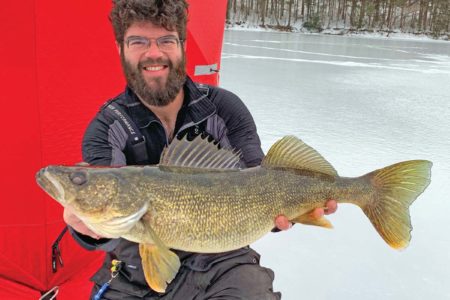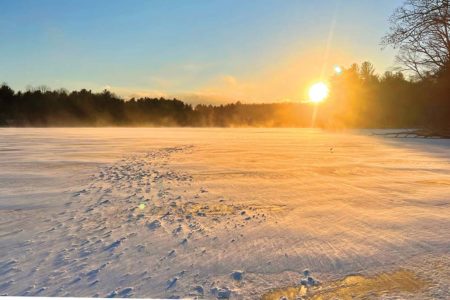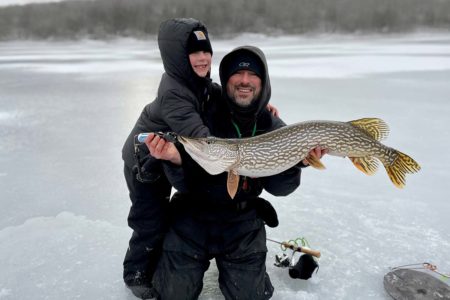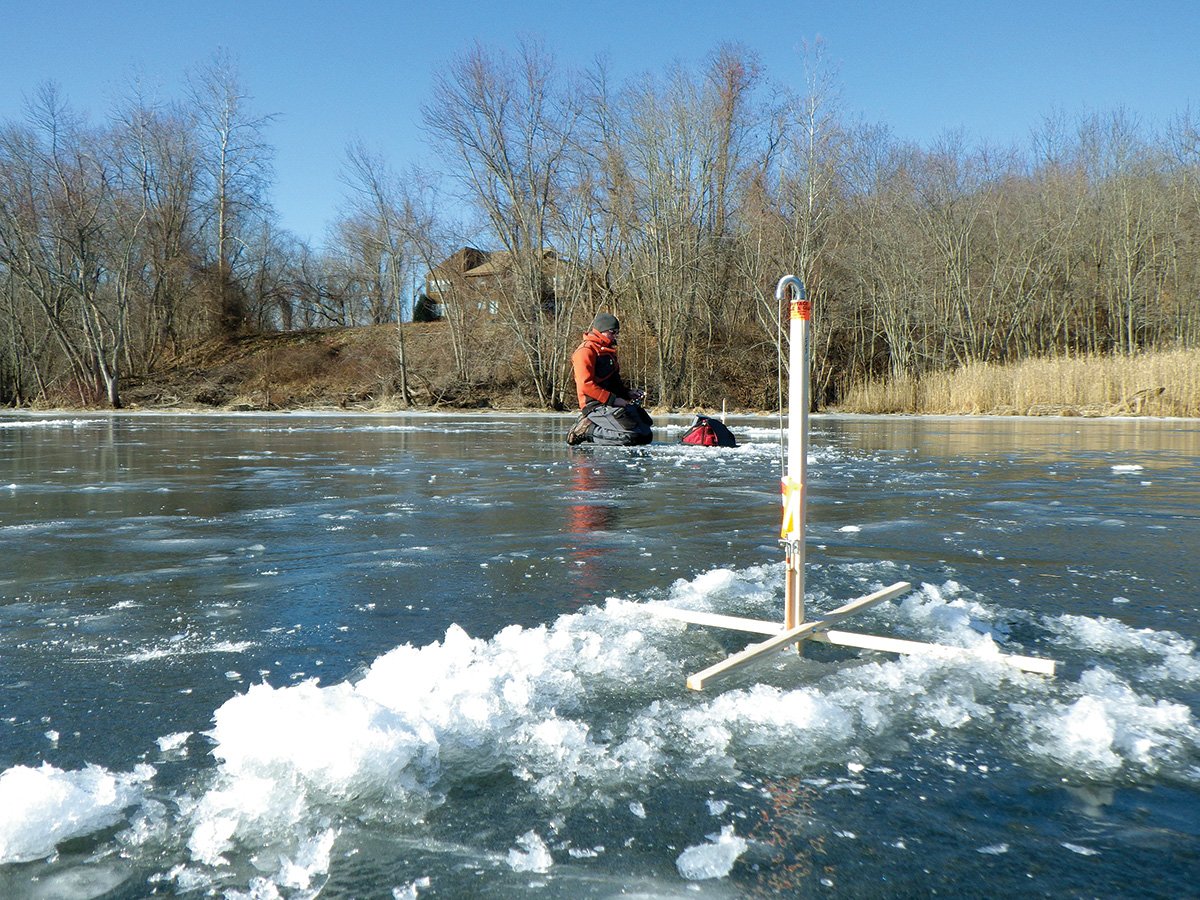
First ice is arguably the best time to be out there during the hard-water season. So doing a lot of scouting in the weeks leading up to it is imperative in order to find success. It is important to be the first to know when any given body of water is fully frozen over, or even just knowing when that one honey hole is locked up. Just remember to bring the right safety gear and have a plan as you explore because early ice can be iffy in some places. Ice isn’t produced uniformly so thickness levels can and will vary. This can be caused by a few things such as springs, inlets, outlets or any form of moving water.
Safety First!
There is some gear that you should always have when hitting the ice, but it becomes even more important when heading out on first ice. Having a good pair of creepers is a must because first ice is usually very slick. Creepers are cleats that are strapped around your boots to gain traction. The last thing that you want to do is pull a “Charlie Brown” and end up slipping backwards and smacking your head against the ice.
Ice picks are another essential item to bring. These are picks that are tethered together and are to be worn around your neck in case you fall through the ice. They will allow you to puncture the ice and pull yourself out. Be sure to keep your picks readily available and on your person at all times.
Extra rope can help assist in the rescue of someone who has broken through the ice. I myself, like to wear a life jacket during early and late ice just in case something goes wrong. Another great idea that is often overlooked by many people is to keep a spare change of clothes in the car with a towel and blanket. If you are to fall in, having dry clothes and something to wrap up in can literally be a lifesaver. These are all items that can help prevent and also assist emergency situations. It is always good to have it and not need it, than to need it and not have it.
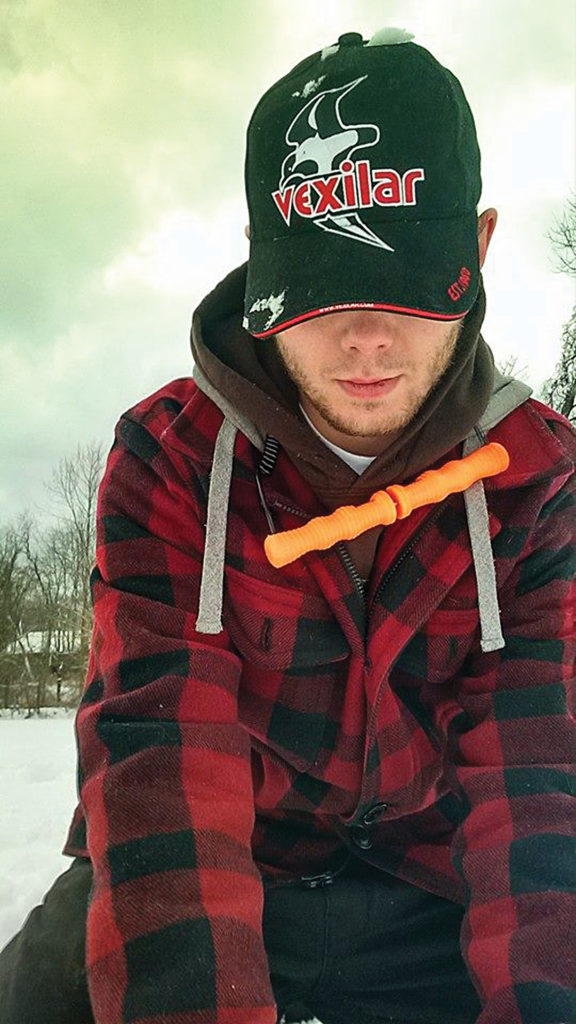
There are also a few things that you should know as well before hitting the ice. Check the thickness wherever you go. Having a spud bar handy to check the ice thickness is absolutely necessary. New ice is usually clear and it is the strongest because it’s so fresh. Ice that has been beaten down by rain or covered in snow will not be as strong. Rain will aid the rapid deterioration of ice, and snow actually acts as an insulator and will hinder ice formation. It also adds weight and gets sloppy after a warm day or two. Always check because if the ice takes a beating and refreezes, it will not be as strong as it once was.
Remember that it is crucial to follow the safety guidelines for ice thickness. Four inches of ice is what’s deemed as being just safe enough for a person to stand on. If you’re on four inches then keep checking everywhere you go because you may find a spot that is less than safe. A few steps in the wrong direction could spell disaster. Always go with someone and let someone else know where you are and when you plan on being done fishing. Keep distance from your buddy too. Having the weight of two anglers spread out across the ice helps to not stress ice that may be a little thinner than you’d like. If the ice is less than four inches just don’t risk it. It is better to wait because no fish is worth your life.
Why First Ice?
Now that we’ve covered some of the safety basics, let’s go over why first ice is so good for fishing. During the colder fall months, there can be little to no pressure put on fish, and once skim ice forms then nobody is touching them. So after a body of water is locked up and safe to fish, it’s on! No angling pressure and water temps that are a little bit steadier (though they still do fluctuate) have the fish in “go” mode. It doesn’t matter what your target species is, first ice really can be the best. Better quality fish are more likely to be iced during this period than the rest of the season. But you need to get on them before anyone else does. Once fish experience angling pressure they become weary and more likely to be spooked from all the noise and sights.
When you begin fishing, try starting in shallower water. We all get tempted to take a walk since we are finally able to, but a lot of the good fishing during first ice isn’t terribly deep. However, during the dead of winter and when it’s coldest, water temperature changes can push fish deeper. In the fall I generally get a read of the layout on places that I want to ice fish. Knowing how the bottom contours and what the structure and cover situations are like are big pieces of the puzzle. We look to places with downed trees, gravel/rocky bottoms and also healthy weed beds. Having some type of cover is a key to finding fish.
Fishing back bays on bigger lakes and smaller coves that were sheltered from strong winds during the fall are the right spots to begin. Once the trees are bare the wind can really become impactful on the water. So out on the main lake things are rocking from a steady chop. Tinder and weeds can become dislodged and broken down from rough waters, drifting cover isn’t exactly the first choice for many fish. That’s why fishing these areas that are protected from the wind all fall are where you’ll find them last. Because of this I keep in mind where I was catching fish just before the place froze over. They generally don’t move far from where you found them last before winter sets in.
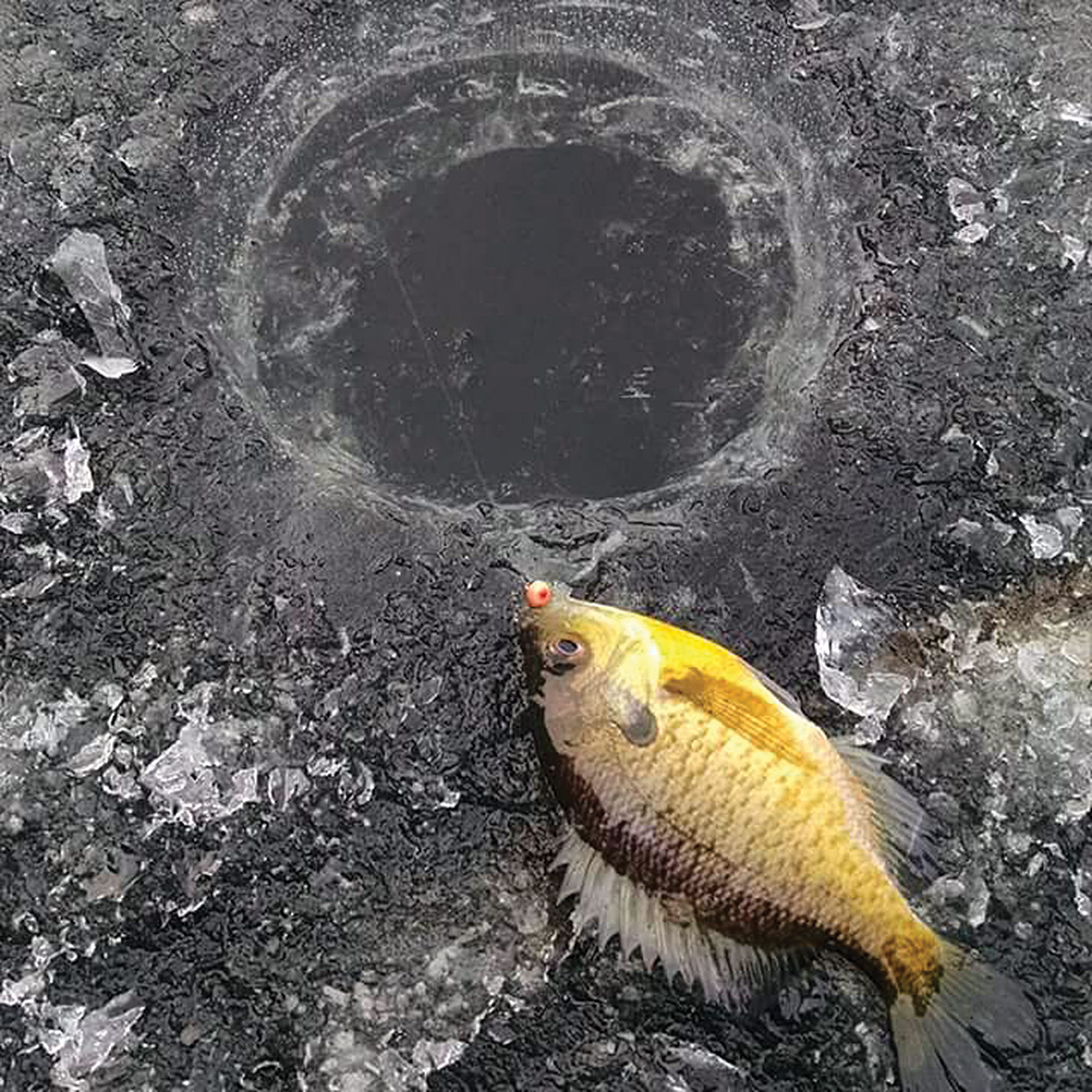
Another thing to take into consideration is that if angling pressure starts to get too intense because people are finding out about opportunities, just keep moving. The larger fish that we are all targeting are smarter than smaller specimens. I mean, they didn’t get to be that big by being stupid. The main point here is that the better-quality fish will move to the outside of a favorable area. Pretty much just on the perimeter. Keep moving until you find the larger fish, and for the most part they will be away from the schools of smaller fish. I usually set tilts on what I feel is the perimeter with shiners below them for the better fish, but jigging is really my bread and butter.
Fish are going to be on the move during early ice. It is a bit different than sitting on one hole all day during the winter doldrums. At the beginning of the season fish will be in a general area, but also cruising at the same time. Due to this it is important that you are mobile as well. Pack light and only bring what you need not only to make it easier to keep hole hopping while chasing down fish, but also for safety reasons. Too much weight in one spot isn’t good when the ice is barely safe. I’ve ventured in the wrong direction before but only had my auger, rods and a bucket with some jigs on me. Finding yourself on three inches of ice or less can be a bit unnerving, just be sure to back out the same way that you came in. Hopefully all of this information will help to keep you prepared, safe and productive out there on the ice this season!

